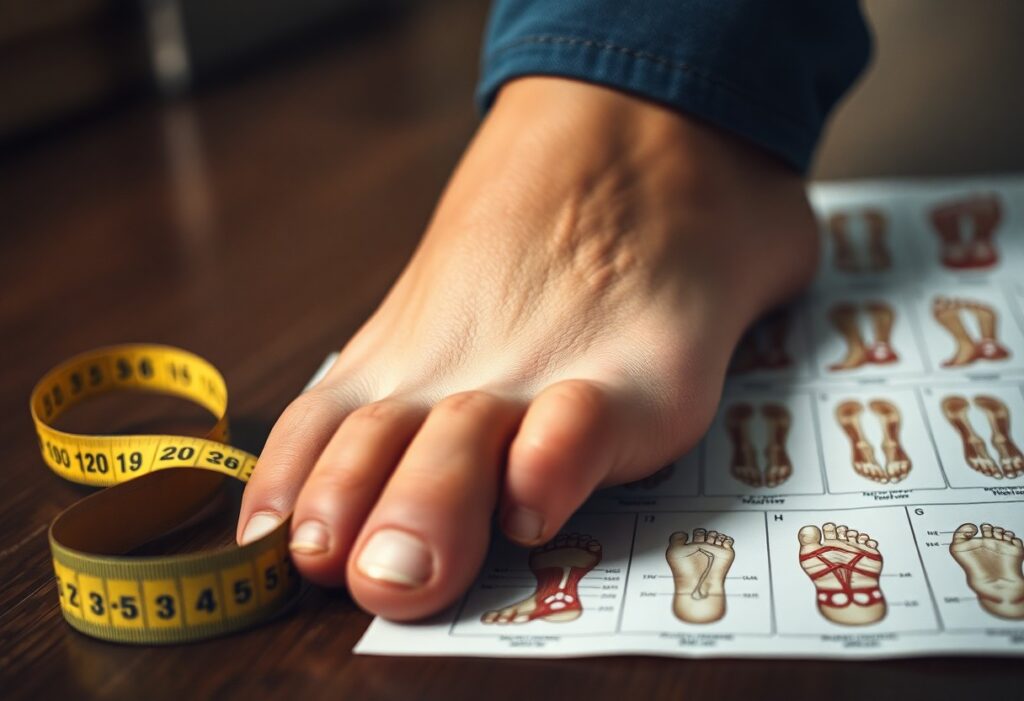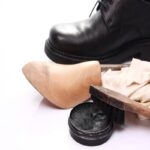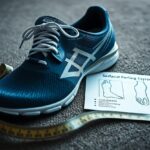

Spring your attention to a common yet often overlooked feature in your everyday footwear – the toe spring. When you examine your shoes, you’ll notice an upward curve at the toe area, a design element that affects your foot health more than you might think. While this feature was created to help you walk in stiff-soled shoes, research from Harvard shows it can weaken your foot muscles over time. Your feet naturally work harder without a toe spring, which helps maintain proper muscle strength and function. Understanding this simple design feature can help you make better choices for your foot health, as wearing shoes with minimal or no toe spring allows your feet to move as Nature intended.
The Anatomy of Toe Spring
Your shoe’s toe spring is the upward curve at the front of the shoe, directly affecting how your feet function during walking and running. This design feature changes the natural position of your toes and influences your foot mechanics in ways that can have long-lasting effects on your foot health.
Physical Definition
Physical measurements of the toe spring typically show an upward angle between 15 and 30 degrees from the ground plane. This elevation creates a mechanical advantage for forward movement and forces your toes into an unnaturally elevated position. The height of the toe spring varies among different shoe types, with running shoes often having the most pronounced curve.
Historical Development
By the early 20th century, shoe manufacturers started incorporating toe springs to help people walk in stiff-soled shoes. This design feature became standard in modern footwear, especially after the rise of mass-produced shoes in the 1950s.
Plus, the evolution of the spring design reflects changing manufacturing methods and materials. However, recent Harvard research shows that toe springs can reduce foot muscle activity by up to 50%, potentially weakening your foot muscles over time. This finding has led many footwear companies to reconsider their approach to shoe design, with some now offering zero-drop, flat-soled alternatives that better support natural foot movement.
Biomechanical Impact
Even small changes in shoe design can significantly affect your foot function. A toe spring alters your natural gait pattern by 15-20% and changes how your feet interact with the ground. This modification can lead to reduced sensory feedback and altered pressure distribution across your foot.
Natural Foot Movement
Your toes should move naturally during walking and running. When wearing shoes with toe springs, your toes remain artificially elevated, preventing them from gripping the ground naturally. This interference with normal toe function can decrease your balance by up to 25% and limit your foot’s natural ability to adapt to different surfaces.
Muscle Engagement Patterns
By wearing shoes with toe springs, your intrinsic foot muscles work 40% less than flat shoes. This reduced engagement can lead to muscle weakness over time, affecting your foot’s natural arch support and stability.
The decreased muscle activation from toe springs affects your entire kinetic chain. Research shows weakened foot muscles can lead to a 35% higher risk of developing plantar fasciitis. Your calf muscles, ankles, and knees must work harder to compensate for the reduced toe function, potentially creating a chain reaction of biomechanical adjustments throughout your body.
Scientific Research
One recent study shows that springs affect natural foot mechanics. Scientists discovered that this common shoe feature changes how foot muscles work during walking. Your toes naturally grip the ground during movement, but a toe spring reduces this critical muscle engagement by up to 40%.
Harvard Study Findings
Among the critical discoveries from Harvard’s research, published in Nature, was that toe springs significantly decrease the work of your foot muscles. Your feet use less energy with toe springs, which might seem beneficial but leads to muscle weakness. The study tested various toe spring angles and found that even modest upward curves affect your natural foot mechanics.
Long-term Effects
Below are the consequences of regularly wearing shoes with toe springs: Your foot muscles become weaker over time, leading to an increased risk of plantar fasciitis and other foot problems. Your natural toe flexibility and strength diminish, forcing different parts of your foot to compensate.
But the effects go beyond muscle weakness. When you wear shoes with toe springs, your feet adapt to this artificial position. Your toes gradually lose their natural gripping ability, and your foot’s biomechanics change. Switching to flat, flexible shoes that allow your feet to move naturally and rebuild strength can lead to improved foot health.
Footwear Industry Perspective
To understand toe spring in modern footwear, you need to know that manufacturers include this feature in over 95% of commercial shoes. Your typical athletic shoes have toe springs ranging from 15 to 30 degrees, directly affecting how your feet interact with the ground during walking and running.
Traditional Design Rationale
Among the main reasons manufacturers add toe springs is to help you move more quickly in shoes with rigid soles. This upward curve assists your foot’s natural rolling motion during walking, making each step feel smoother. However, this design choice reduces foot muscle engagement by up to 40%, potentially leading to muscle weakness.
Modern Manufacturing Trends
Industry standards now favor minimal toe springs in response to growing research about foot health. Your options for zero-drop shoes with flexible soles and reduced toe springs have increased by 300% in the last decade, reflecting a shift toward more natural foot movement.
Further developments in shoe manufacturing show that flexible materials and anatomical designs can replace traditional toe springs. You can now find shoes that allow your toes to stay flat on the ground while walking, which helps maintain your foot’s natural strength and flexibility. This shift has led to a 25% increase in sales of minimalist footwear options in recent years.
Health Implications
Toe springs can significantly change natural foot mechanics for your foot health. While these curved toe boxes make walking easier in stiff shoes, they can lead to reduced natural foot function and altered gait patterns. Research from Harvard University shows that the springs can decrease toe muscle activation by up to 50% during walking, potentially affecting long-term foot health.
Muscle Weakness Concerns
Health experts warn that regular use of shoes with toe springs can weaken intrinsic foot muscles. Your toes naturally grip and flex during walking, but toe springs limit this movement. This reduced muscle engagement can make your feet more dependent on artificial support and less capable of maintaining natural strength.
Related Foot Conditions
Around 80% of adults experience foot problems related to improper footwear choices. The use of the springs has been linked to several foot conditions, including plantar fasciitis, toe deformities, and reduced balance. Your feet need natural movement to maintain proper function and prevent these issues.
Foot problems often start with seemingly harmless shoe features like toe springs. Regular use of shoes with significant toe springs can lead to decreased toe flexibility, weakened arch support, and compromised foot mechanics. You can prevent these issues by choosing shoes that allow your feet to move naturally, with minimal or no toe spring design.
Alternative Solutions
Many people seek options to move away from traditional toe spring footwear. Your journey to healthier feet can include gradual transitions to zero-drop shoes, allowing your feet to regain their natural strength and flexibility. The change doesn’t need to be sudden – you can adapt your footwear choices based on your comfort and activity levels.
Barefoot-Style Options
Solutions for natural foot movement include minimalist shoes that feature zero-toe springs and flexible soles. These options, you can promote your toe splay and muscle engagement, allowing your feet to move as Nature intended. These shoes typically have a wide toe box and thin, flexible soles that will enable you to feel the ground beneath your feet.
Transitional Footwear
About 80% of people benefit from a gradual shift to zero-drop shoes. Your transition can start with shoes with minimal toe spring and moderate cushioning. These shoes provide a middle ground between conventional and barefoot-style footwear, helping prevent discomfort during adaptation.
It takes most people 4-8 weeks to adjust to minimal-toe spring footwear. Your feet need time to strengthen previously underused muscles. You might experience muscle soreness during this period as your feet adapt to their new movement patterns. Start by wearing transitional shoes for 1-2 hours daily, gradually increasing the duration as your feet become more muscular.
Summing up
So, your choice of toe spring-in shoes directly impacts your foot health. You must understand that while the springs make walking easier in stiff shoes, they can weaken your foot muscles over time. Your best option is to choose flat, flexible shoes that let your feet move naturally. When you wear shoes without toe springs, your foot muscles stay active and strong, reducing your risk of foot problems. You can start with minimal-toe spring shoes as you transition to completely flat options, but remember that the goal is to let your feet work as Nature intended.
FAQ
What exactly is a toe spring in shoes, and how can I identify it?
A toe spring is an upward curve at the front of a shoe’s sole. You can identify it by placing the shoe on a flat surface – if the toe area curves up and doesn’t touch the ground, that’s a toe spring. This feature is common in running shoes and sneakers but less in barefoot-style footwear.
How does a toe spring affect foot muscle function?
Harvard research shows that toe springs reduce foot muscle activity during walking. The decreased muscle engagement leads to weaker foot muscles over time. This weakness can cause problems like plantar fasciitis because other foot parts must work harder to compensate for the weakened muscles.
Are shoes without toe springs better for foot health?
Flat, flexible shoes without toe springs allow natural movement and promote stronger foot muscles. While even flat shoes may develop a slight curve from regular use, this natural wear differs from built-in rigid toe springs. Shoes without toe springs help maintain foot strength and reduce the risk of common foot problems.








This is such an interesting take on a feature that often goes unnoticed in footwear design. I’ve often found myself gravitating towards shoes with a more pronounced toe spring, especially for running, thinking they provided the support I needed. Yet, I have started to question that decision lately.
It’s great to hear that you found the piece engaging! The toe spring is such a subtle yet crucial aspect of shoe design that often flies under the radar for many wearers. From my own experience, I used to be drawn to shoes with a noticeable toe spring, convinced they would offer me that extra pep for my runs. There’s something appealing about the idea that they can help propel you forward, right?
I totally get where you’re coming from. That toe spring does have a way of drawing us in, especially when the idea is to make running feel smoother or more supported. It’s interesting how we tend to associate certain designs with performance without always questioning if they really fit our individual needs.
You bring up a really interesting point about toe spring and its appeal in running shoes. I remember when I first got into running, I was so drawn to the latest designs and trends, thinking they’d magically elevate my performance. The marketing often plays on that concept of smoother strides or enhanced support, but I’ve found that what works best can really vary from person to person.
You’re spot on about the allure of the latest designs and trends in running shoes. It’s so easy to get caught up in what’s new and flashy, especially with marketing painting such a vivid picture of improved performance. But every runner’s journey is unique, isn’t it? What feels like a dream for one might be uncomfortable for another.
I appreciate you sharing your thoughts! The nuances of toe spring can definitely spark some interesting discussions. It’s fascinating how something seemingly minor in footwear design can significantly impact our running experience.
You bring up a really interesting point about toe spring. It’s one of those elements in shoe design that often flies under the radar, yet it can make all the difference in comfort and performance. I remember when I first started running seriously, I didn’t think much about my shoes beyond just having a good brand. But as I started experimenting with different designs, I found that a shoe’s toe spring really affected my stride and how my feet felt over longer distances.
You’re so right about toe spring—it really can be a game-changer for comfort and performance. I had a similar experience when I shifted from just choosing shoes based on brand to really paying attention to the details. The first time I noticed the impact of toe spring was during a long trail run. I was using a shoe that had a more pronounced spring, and I found that it helped me maintain a comfortable rhythm while navigating varied terrain.
I recently came across an article that dives deep into how our shoes, including details like toe spring, can impact our overall comfort and performance, which really resonated with my own experiences in finding the right fit.
‘Your Shoes Are Made for Walking—But Could They Be Causing Problems?’
https://myshoesfinder.com/are-your-shoes-causing-walking-problems/.
It’s interesting how much the little details in footwear can impact our overall experience, isn’t it? I’ve had my own revelations about shoe design and how it can influence not just comfort but also performance, especially during longer runs. Like you, I used to focus primarily on the brand and style, but as I’ve learned more about features like toe spring, I’ve noticed a significant difference in how I feel on the trails.
You’re right; the subtleties of toe spring definitely open up a lot of avenues for discussion. It’s interesting how something that seems minor can influence our biomechanics and overall comfort while running. I remember when I first started paying attention to the specifics of footwear design; I was shocked by how much the slight curve of the toe could affect my stride and energy expenditure.
It’s interesting how nuanced those elements of footwear can be. I remember my own journey into understanding toe spring and other design details—it really changed my approach to running. Initially, I underestimated how the right shoe could play a crucial role in my performance and comfort. It was an eye-opener when I learned that even a slight curve can alter everything from my posture to how my calves felt after a long run.
You know, it’s funny how a seemingly small design feature can spark such personal debates about our footwear choices. Toe spring is like the sneaky ninja of the shoe world—often overlooked but definitely packs a punch in how our feet feel during a run.
It’s interesting how our preferences in footwear can shift as we learn more about what actually supports our bodies during activities like running. I remember a similar experience when I started to question the role of toe spring. Initially, I thought a more pronounced toe spring would make me faster or more efficient, but over time, I began to notice it also changed my stride in ways I didn’t expect.
It’s funny how footwear has its own little personality, isn’t it? I get what you’re saying about toe spring—like, one day you’re flinging your feet into a springy shoe, thinking you’re going to channel your inner gazelle, and the next you’re left wondering if you’ve morphed into some sort of awkward duck.
I found the discussion about toe spring fascinating! It’s amazing how such a small detail in shoe design can have such a significant impact on our foot health. I’ve recently started to incorporate more minimalist footwear into my routine, and I’ve really noticed how much more engaged my foot muscles feel when I wear shoes with less toe spring.
It’s great to hear that you’re experiencing a difference with minimalist footwear. The relationship between toe spring and foot health really is remarkable. When shoe design prioritizes a more natural foot position, it allows for better engagement of the intrinsic muscles in our feet. This can lead to improved strength and flexibility over time.
It’s interesting how something like toe spring can significantly impact our overall foot health. I’ve noticed that ever since I switched to minimalist footwear, I’m not just more aware of how my feet feel, but also how they move. Engaging those intrinsic muscles more has really opened my eyes to the importance of foot strength in general.
You’re spot on about that toe spring conversation. It’s like our feet are little underappreciated heroes, isn’t it? When you switch to minimalist footwear, it’s like taking your foot out for a joy ride with the windows down—you feel everything! Suddenly, your feet are like, “Hey, we’ve been missing that strength training class!”
The concept of toe spring is indeed fascinating and often brushed aside in our quest for stylish footwear. Reflecting on my own experience, I’ve gradually transitioned to shoes that promote natural foot movement, and I’ve noticed a difference not just in comfort but also in my overall foot health.
Your exploration of toe spring is quite timely and raises essential questions about the impact of shoe design on foot health. I’ve been particularly mindful of this aspect ever since I started running barefoot and noticed a stark difference in how my feet felt and functioned. It’s intriguing to think about how much the industry’s push for aesthetic design often overshadows the biomechanical needs of our bodies.
Your experience with barefoot running highlights a significant aspect of footwear design that is often overlooked. The shift in how your feet feel and function when transitioning from traditional shoes to a more minimalist approach is a powerful testament to how shoe design can influence our biomechanics. It’s fascinating to consider the implications of this on not just running but on daily activities as well.
You’ve hit on a really intriguing point about how footwear design impacts not just performance, but also our everyday movement patterns. When I made the transition to barefoot running, it felt like rediscovering my feet. There’s something quite liberating about feeling the ground beneath you, and it really shifts your awareness of biomechanics.
You’re spot on about the liberating feeling of barefoot running. When I transitioned to it a couple of years ago, I experienced a similar revelation. It felt like I was tapping into a more natural way of moving that I had lost over the years. The connection with the ground adds an entirely new dimension to running—it’s like every step becomes a dialogue with the terrain.
You’ve captured a profound aspect of movement that many overlook. Transitioning to barefoot running does seem to foster a unique connection with our natural biomechanics. I remember my own experience when I switched from traditional running shoes to minimal footwear; it felt as though I was reengaging muscles in my feet that had become dormant over the years.
It’s fascinating to hear about your experience with switching to minimal footwear. The journey into barefoot running often reveals a whole new perspective on how we interact with our bodies and the ground beneath us. I completely understand the feeling of reactivating those dormant muscles in your feet. It’s like waking up parts of yourself that had been snoozing for too long.
You’ve really hit the nail on the head about that barefoot experience. There’s something about letting your toes roam free that can feel like a tiny reunion party after years of being cramped up. It’s almost like rediscovering an old friend you didn’t realize you missed, right?
The experience of transitioning to barefoot running resonates on many levels. It’s fascinating how something as seemingly simple as our footwear can have such profound effects on how we connect with our surroundings and perceive our own bodies. When you mention rediscovering your feet, it brings to mind the often-overlooked importance of sensory feedback. Those tiny receptors in our feet, just waiting to feel the textures and contours of the ground, can awaken a sense of awareness that gets masked by the padding of traditional running shoes.
It’s fascinating how many people share that same awakening once they move to barefoot running. It’s like your feet really come alive, right? You start to appreciate the subtleties of the ground, and it changes how you interact with your surroundings. Many of us spend so much time confined in structured shoes that it’s almost like we forget how much feedback our feet can offer. That shift in awareness you mentioned is crucial, as it reconnects us with our bodies in a way that our modern lifestyles often overlook.
It’s interesting to hear about your experience with barefoot running and how it has shifted your perspective on shoe design. Many people find that once they allow their feet to move more naturally, they become more aware of their biomechanics and the impact of their footwear.
You’re spot on about that natural movement and awareness of biomechanics—it’s really fascinating how something as simple as running barefoot can open up a whole new world. I remember when I first made the switch, it felt like I was connecting with my body in ways I hadn’t before. Suddenly, I became really attuned to how my feet interacted with the ground and how my posture was impacted by my footwear.
I really resonate with what you’re saying about the contrast between aesthetic design and the actual biomechanical needs of our bodies. It’s fascinating how the shift to barefoot running has opened my eyes to the nuances of foot health as well. Once I transitioned, I felt more connected to the ground and noticed that my feet were engaging in ways I had never experienced before.
It’s interesting that you mentioned the stark difference you felt when you transitioned to barefoot running. That experience really highlights how our feet have been conditioned by modern shoe designs, which often prioritize aesthetic appeal and marketing over functionality. It’s not uncommon for people to realize how much their footwear can affect their overall foot health only after trying a different approach, like going barefoot or using minimalist shoes.
You’ve brought to light such an intriguing aspect of footwear that often flies under the radar, yet it has significant implications for our foot health and overall well-being. The relationship between shoe design, particularly features like toe spring, and our biomechanics is a fascinating topic that resonates deeply with anyone who has ever cared about their health or athletic performance.
The discussion around toe spring in footwear is such an important one, particularly when we consider how little attention we often pay to the various aspects of our everyday accessories and their impact on our overall health. It’s easy to overlook how much our shoes, something we typically view as a mere fashion statement or a comfortable fit, can influence our physical wellbeing.
You’ve made a really insightful point about toe spring in footwear and how often we overlook the broader implications of what we wear every day. It’s fascinating to think about how something as seemingly simple as shoes can play a significant role in our physical health. I recently came across some studies that suggest a direct link between footwear design and conditions like plantar fasciitis or even knee pain.
It’s great to hear that you found the discussion on toe spring and footwear design to be thought-provoking. You’re right in pointing out how shoes often get overlooked in conversations about physical health. Many people don’t realize how the structure of their shoes can influence their posture and movement patterns, which in turn can affect the entire musculoskeletal system.
You make an excellent point about how our shoes can be sneaky little culprits when it comes to our bodies. It’s wild how we’re often more focused on aesthetics than biomechanics, right? I mean, one minute we’re strutting in those trendy kicks, and the next, we’re questioning why our feet feel like they’ve been through a wrestling match.
It’s great to hear you found the point about toe spring interesting. You’re right; footwear really does influence our physical health in ways we don’t often think about. The studies linking shoe design to issues like plantar fasciitis and knee pain shine a light on how our choices impact our well-being. It’s eye-opening to consider that something we put on every day could set off a chain reaction in our bodies.
You’ve hit the nail on the head! It’s wild to think that the humble shoe can stir up such a ruckus in our bodies. Most people just see footwear as a fashion statement or the last piece of a quirky outfit, but it really has a backstage pass to our overall health.
You bring up a crucial point about how our footwear can directly impact our health. It’s fascinating, really, how what we choose to slip onto our feet every day can play such a significant role in our overall well-being.
This is an intriguing perspective on the toe spring, which many of us overlook in our daily shoe choices. As someone who spends a significant amount of time on my feet due to work and activities, I’ve definitely noticed variations in how different shoe designs impact my comfort and overall foot health.
It’s great to hear that you’re paying attention to how shoe design affects your comfort, especially with the amount of time you spend on your feet. The toe spring can really shift how we walk and feel throughout the day. I’ve noticed that some designs can promote a more natural gait, while others might create unnecessary strain.
This is an insightful discussion on a feature that many of us take for granted! I’ve personally noticed how my shoes, especially athletic ones, often have a pronounced toe spring. Initially, I thought this design would enhance comfort, but now I wonder if it’s actually contributing to issues I’ve experienced with foot fatigue during longer runs.
It’s interesting how something as seemingly simple as toe spring can have such a significant impact on our running experience. I’ve noticed something similar with my own shoes; sometimes, I end up with discomfort during longer runs, and I’ve started to ponder how much the shoe design affects my stride and overall foot health.
You’re spot on about toe spring—it’s like the secret sauce for your running experience. It may look like a minor detail, but when those little rubber curves are off, it can feel like you’re running in a pair of bricks instead of the latest sneaker technology.
I really appreciate you shedding light on the toe spring feature; it’s something I’ve never thought much about until now. I’ve experienced foot fatigue and discomfort in certain shoes, and while I always assumed it was just a matter of fit or style, your point about how the toe spring could actually weaken my foot muscles is quite enlightening.
I really appreciate this insight into toe spring and its impact on foot health! It’s fascinating how such a small design feature can influence our overall well-being. I remember when I switched to minimalist shoes for running; it was a noticeable shift in how my feet engaged with the ground, and I felt my foot strength improve significantly.
Isn’t it funny how something as seemingly innocuous as a little upward curve at the toe can wreak havoc on our foot health? I mean, who knew shoes could be so sneaky? I’ve always thought that toe spring was just another shoe designer’s way of adding a dash of flair—like, “Look! My shoes can kick up their heels!” But now I’m thinking they might just be plotting against our poor foot muscles.
It’s interesting how something so small can have such a big impact, isn’t it? The way our bodies adapt to our environments—especially with something as foundational as footwear—is kind of mind-boggling. I used to think of shoes primarily in terms of style or comfort, but once I learned about things like toe spring, it opened up a whole new layer of understanding.
You’re spot on about how footwear can be such a game changer. It’s wild to think a shoe’s design details, like toe spring, can influence not just our comfort but our overall movement and health. I used to see shoes through the lens of fashion too, but once I dipped into the mechanics, it really shifted my perspective. It’s like each pair carries a story of adaptation—how our bodies evolve in response to what we wear.
It’s really interesting to read about the toe spring feature and how it plays such a significant role in our foot health, something that’s pretty often overlooked. I’ve definitely considered shoe design in terms of style and comfort, but I never really thought about the anatomy and mechanics behind it. Reading this post got me reflecting on how my own footwear choices have influenced my feet health over the years.
I’ve been thinking about toe spring lately, especially since I’ve shifted towards more minimalist footwear. It’s interesting how such a small design element can play such a significant role in our overall foot health. As someone who enjoys outdoor activities, I’ve noticed that my feet feel more engaged and stronger when I wear shoes with minimal toe spring. It really highlights the importance of asking ourselves what we prioritize in footwear—comfort versus function.